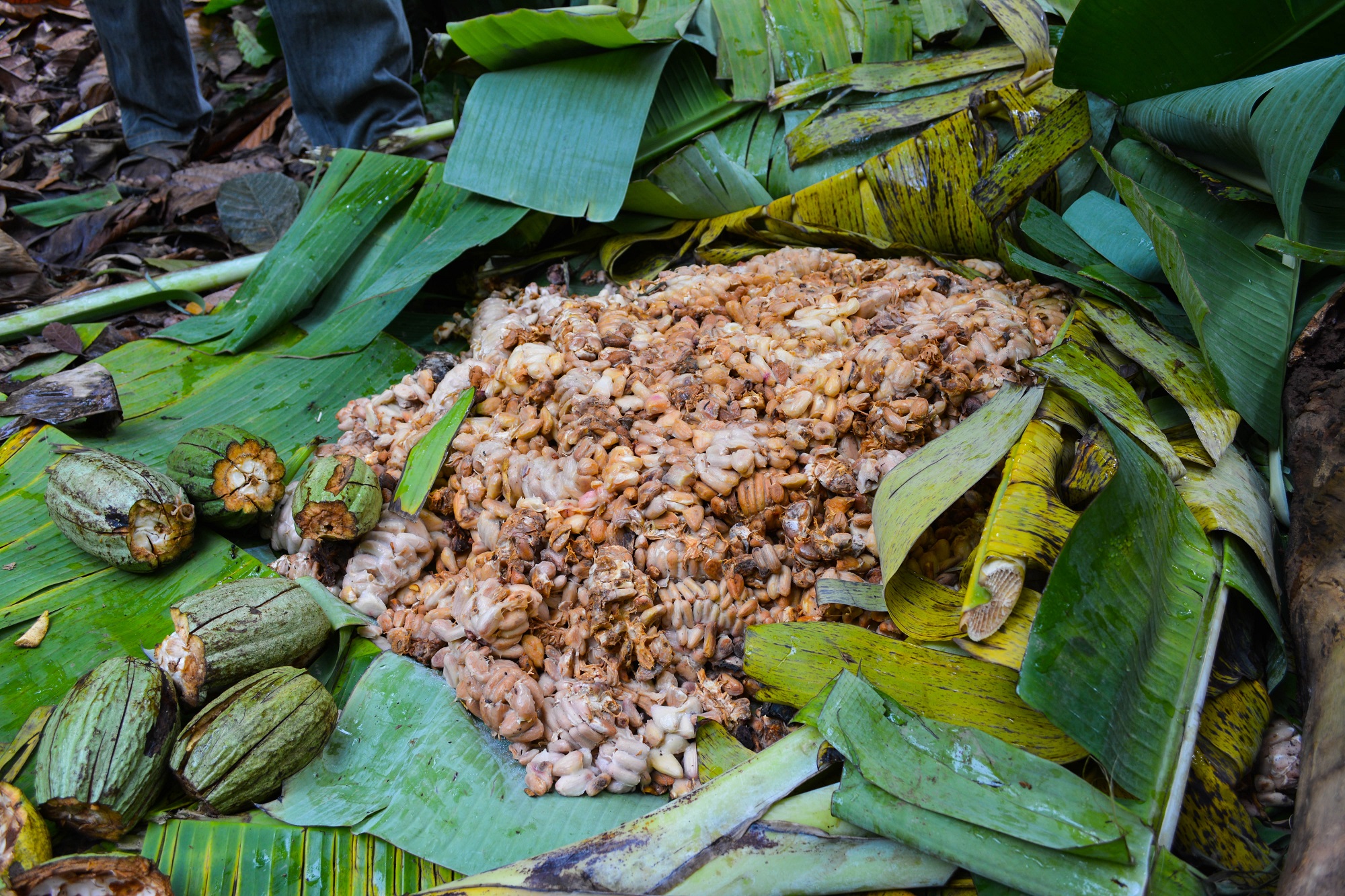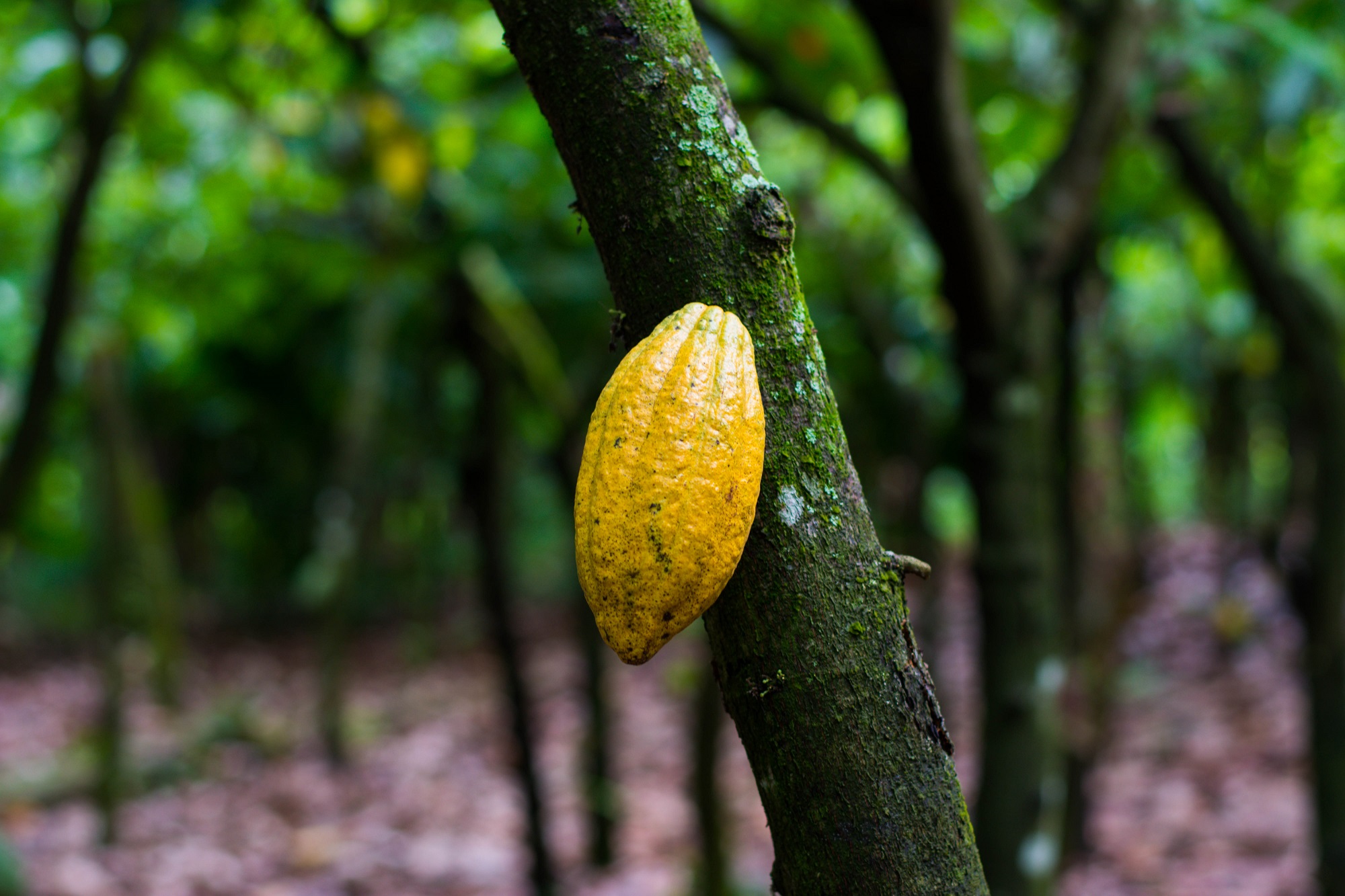Entry Points
Climate-smart cocoa actions can be started from multiple entry points. We’ve divided them in 3 areas: practices, system approaches and enabling environments for climate-smart cocoa.
Entry Point
Practices
Climate-Smart Cocoa recommends a series of agricultural practices that have been found to fulfill one or more of the key objectives of CSC. The following section provides an overview of these entry points with information and argumentation rooted in the literature. The practices presented are shading and agroforestry, pruning/thinning, soil management, water management, pest and disease control, and crop production. As is typically the case with agricultural interventions, the expected results of these practices are context-specific, and they are interlinked with other traditional farm management and CSC practices. While these entry points refer to the farm-level, natural-resource management should also be considered at the landscape level (see below systems approaches section).
Shading and agroforestry
Cocoa trees in shaded farms experience less damage from floods, storms, heat stress, intensive rainfall, and pests. Plus, as climate changes it becomes increasingly important for farmers to diversify their incomes.
Pruning and thinning
Correct pruning practices have been shown to reduce pest and disease contagion and improve the microclimate of cocoa plantations. The impact of environmental risks, including strong winds, droughts, and floods can be reduced by making adequate choices in terms of cocoa and shade tree pruning.
Soil management
Increasing the organic matter content of the soil and improving its water holding capacity increases the resiliency of farms to droughts and strong winds, and facilitate replanting.
Water management
A climate resilient water management approach is required to maintain plantations in the establishment phase and along maturity.
Integrated pest management
Methods of prevention and elimination of pest and disease incidence will have to change in response to changing climate.
Stress tolerant varieties
Breeding of new cocoa varieties with increased water use efficiency, higher yields, and resistance to pests and diseases could help tackle prolonged dry periods, droughts, and changing pest and disease dynamics that threaten the future cocoa yields of farmers in many current production sites.
Post-harvest processing
The success in post-harvest processing is dependent on the interaction between environmental factors (e.g. humidity) and factors related to the process (e.g. bacteria during fermentation).
Entry point
System approaches
The objectives of Climate-Smart Cocoa (CSC) are evaluated at several levels. In addition to the recommended technologies and practices for implementation at the individual farm level, CSC considers the broader levels of landscapes, ecosystems, and value chains. At all stages, the key objectives remain increasing productivity and adaptation while mitigating greenhouse gas emissions. Beyond the farm level, analysis can focus on the achievement of synergies, estimation of trade-offs, and cost-benefit analyses. By taking a comprehensive stance on the pursuit of objectives, a CSC approach can help determine which practices and actions are most efficient and relevant for stakeholders.
Landscape level
One of the defining issues in cocoa production is its effect on landscapes, specifically encroachment into forests.
Value chains
Value chain analysis is about mapping the roles and responsibilities of different actors to identify threats and opportunities.
Entry point
Enabling environment
The enabling environment for climate-smart cocoa constitutes a set of framework conditions that encourage the adoption of climate-smart practices. This framework is composed of a variety of tools, incentives, and policies, including institutional arrangements, advisory services, gender aspects, stakeholder involvement, etc. Changes in the enabling environment can reorient current practices toward climate-smart cocoa in a sustainable an efficient way. It promotes institutional capacity and facilitates access and risk-reduction to the adoption of new technologies and practices. Comprehensive enabling environments have already been proven effective for climate-smart agriculture implementation.
Weather stations and information services
Weather stations data help identify climate trends to improve climate change risk assessments. Temperature, rainfall, humidity, wind speeds and solar radiation are among the data points that could be gathered by weather stations, which can improve timing recommendations for CSC practice implementations.
Gender and cocoa
Gender issues need to be addressed in the planning and implementation of climate-smart practices in cocoa, as women and men are affected and respond differently to climate change-related risks.
Price premiums
Specialization in high-quality cocoa could increase yield incomes, this requires enabling farmer access to high-value cocoa markets.














